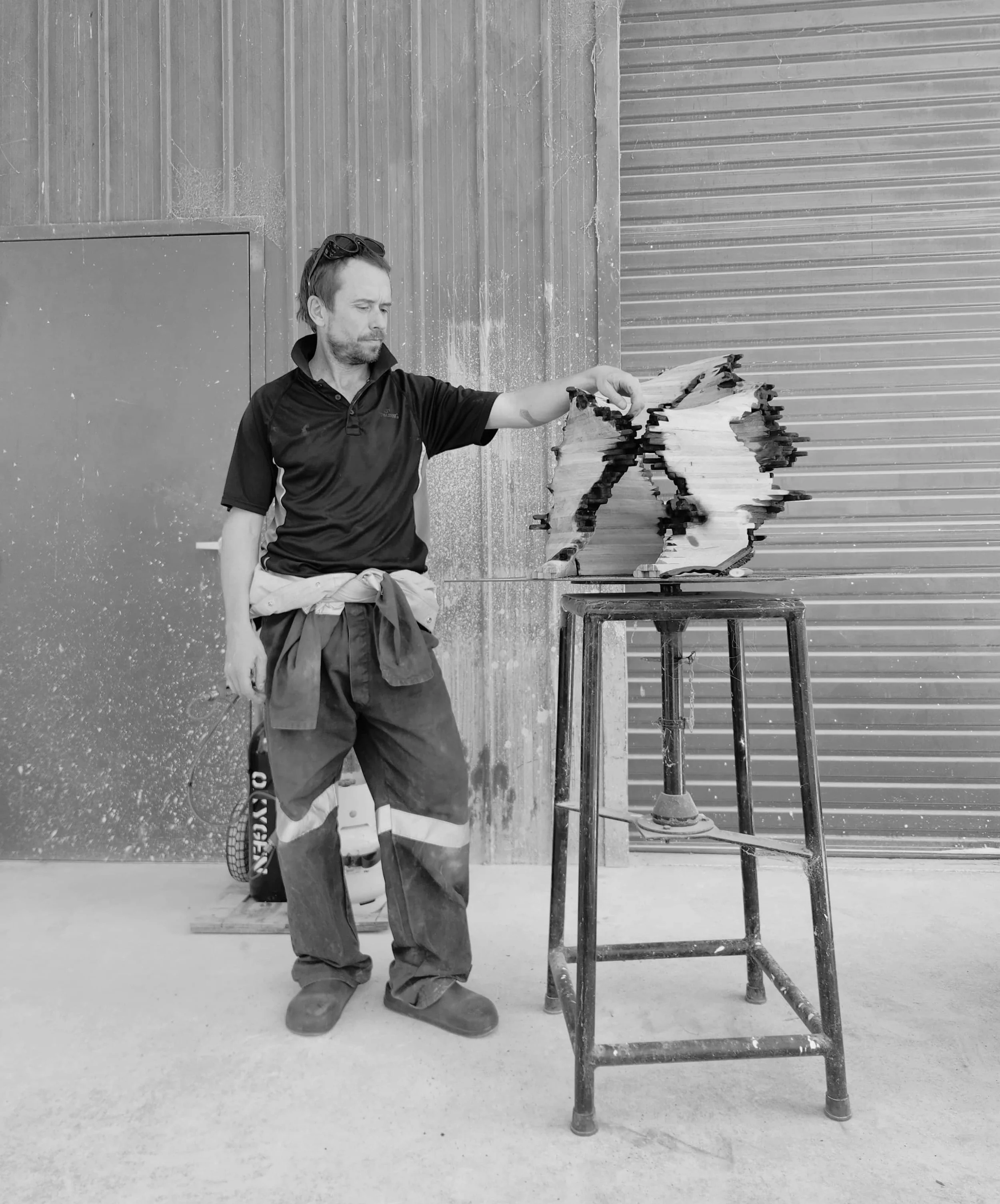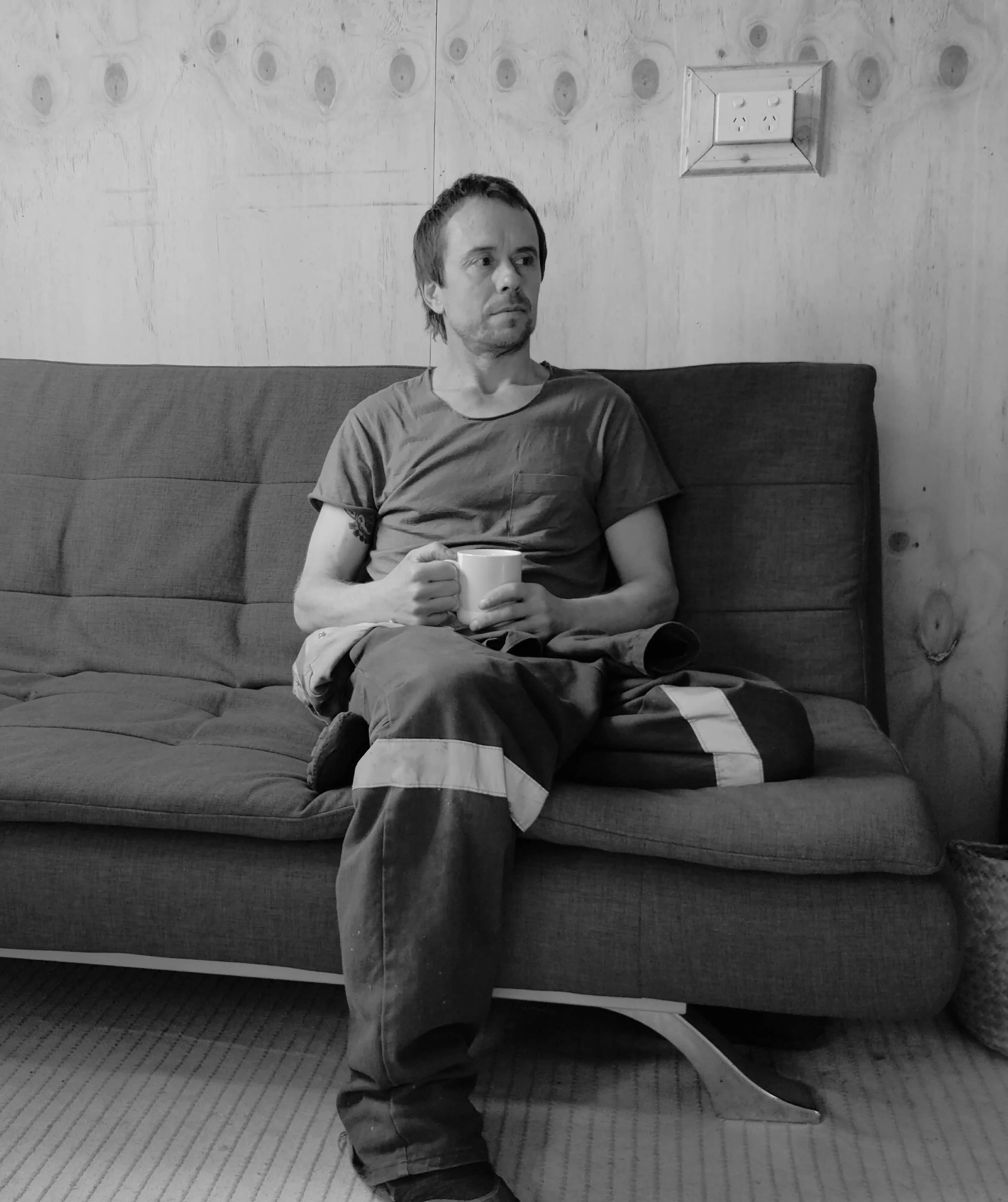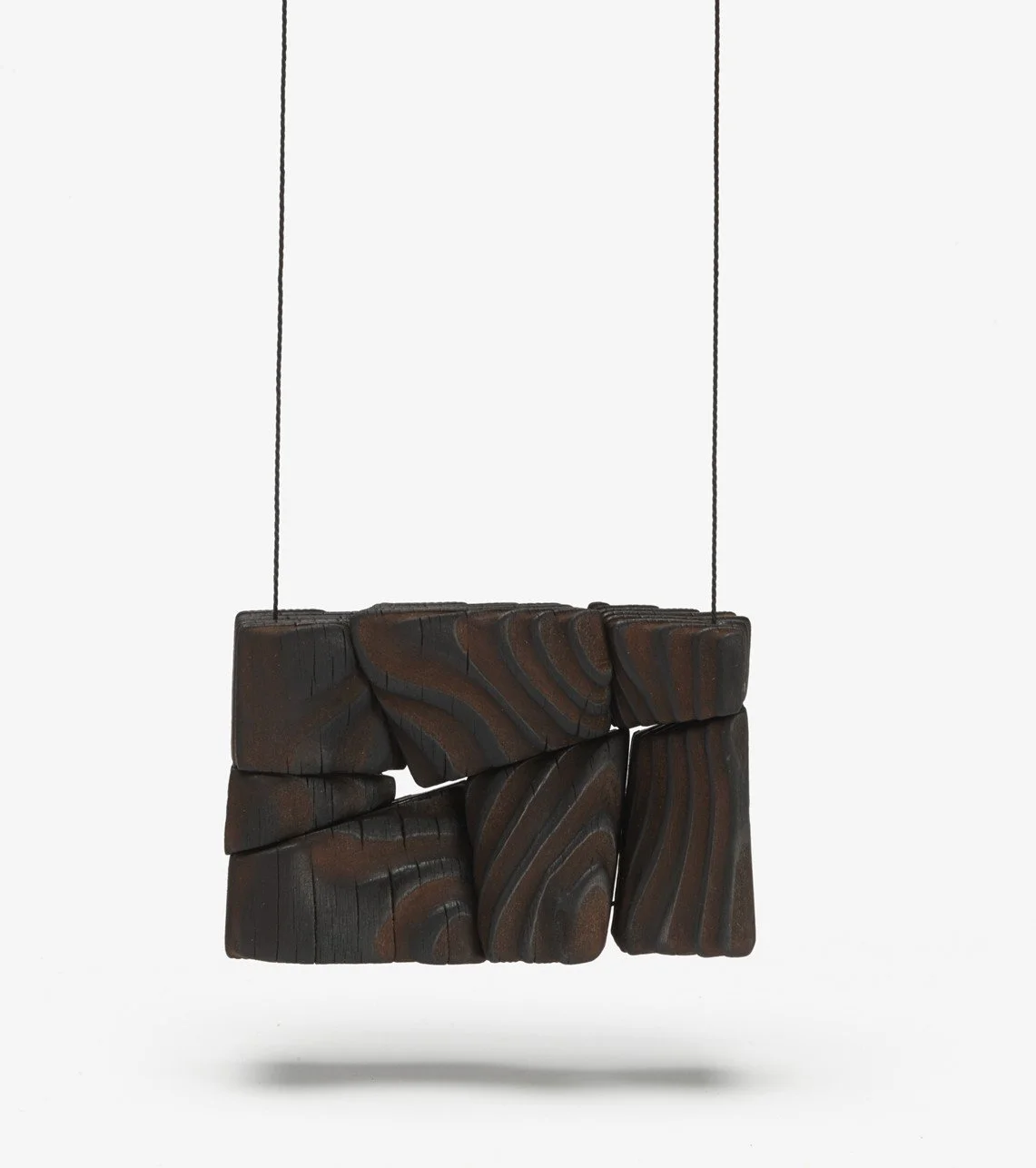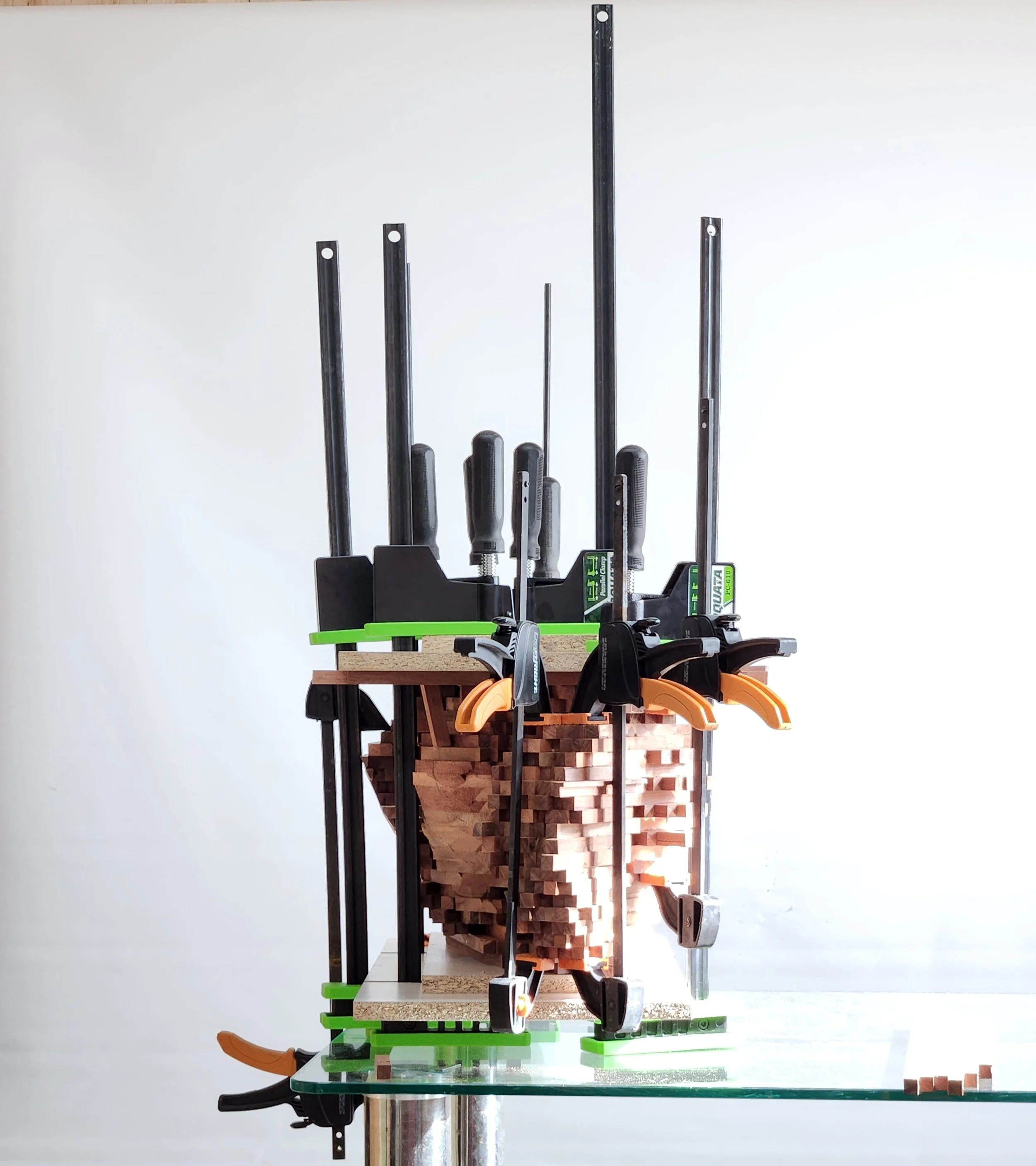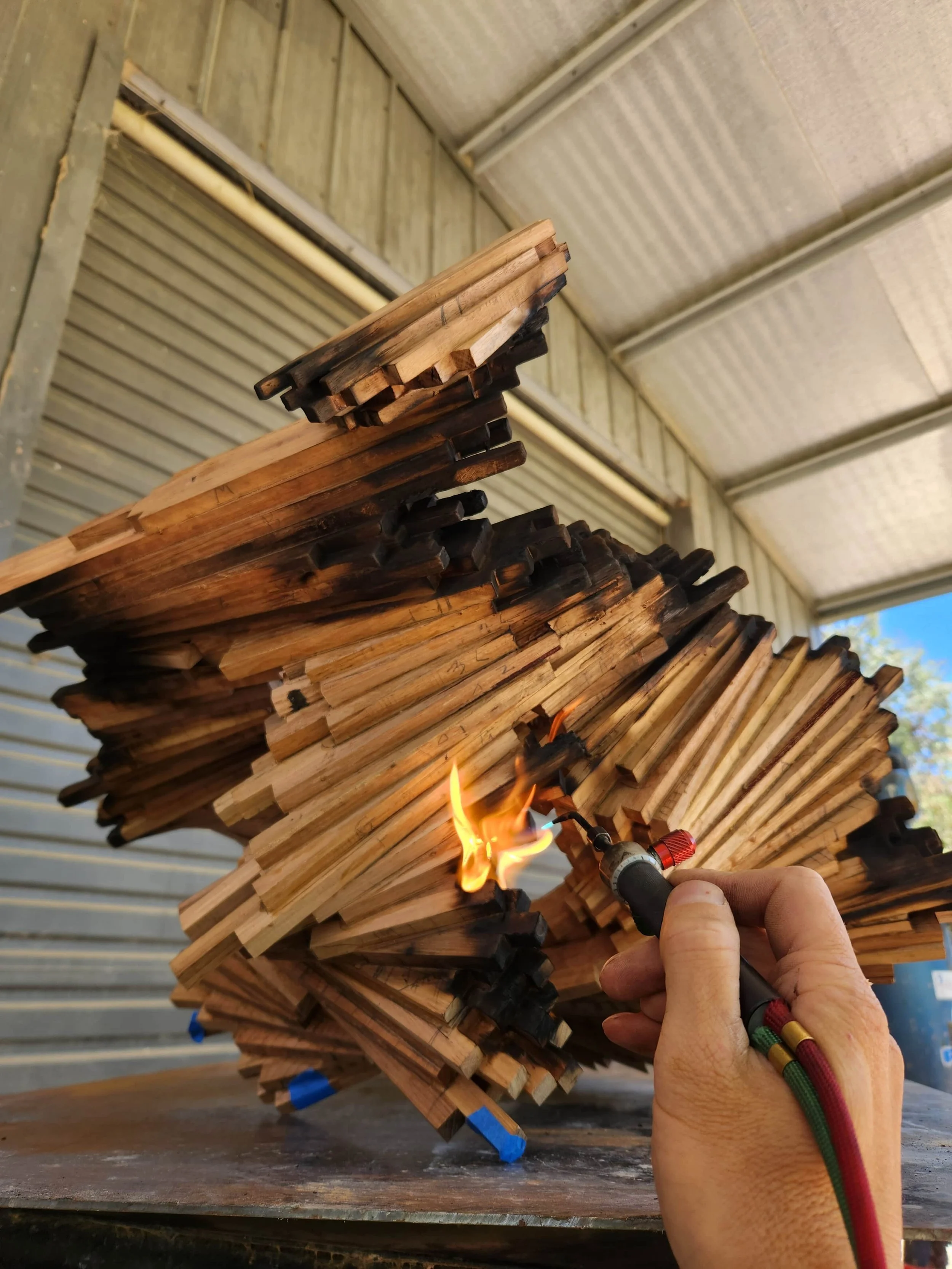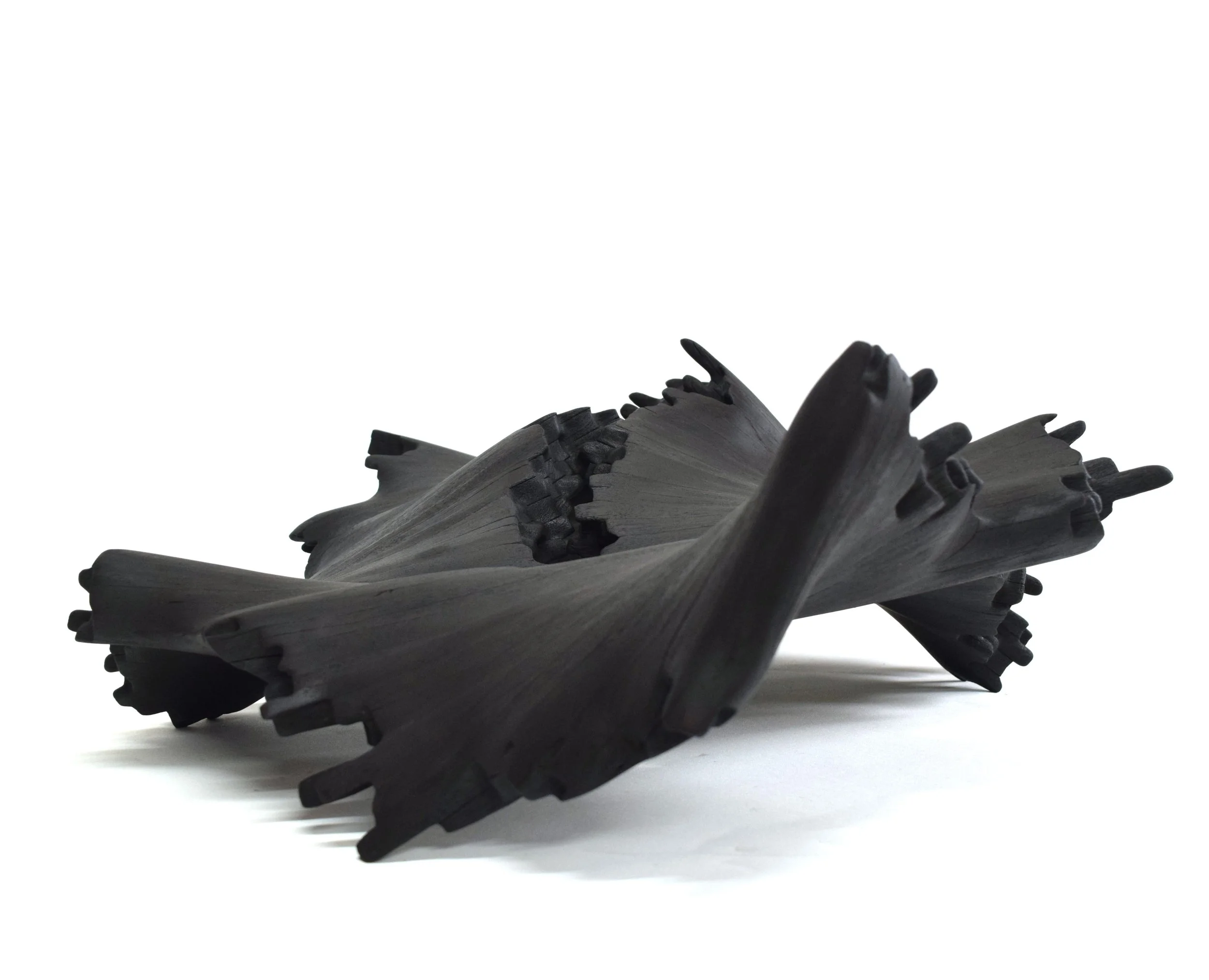MEET THE MAKER - Tom O'Hara Artist - Build, Burn, Repeat Exhibition
Tom O’Hara - Artist - Build. Burn, Repeat
August 2025
Tom O’Hara is a Canberra-based artist whose work bridges the gap between the natural and human-made worlds. With a deep curiosity for the intricate relationships within nature and a passion for sustainable practices, Tom transforms recycled timber into breathtaking sculptures that challenge perceptions of material and form.
His upcoming exhibition at the Mixing Room Gallery offers a glimpse into his creative journey, from his early experiments with fire and wood to his refined, thought-provoking pieces that blur the line between art and nature. In this "Meet the Maker" interview, Tom shares his story, inspirations, and the philosophy behind his practice, inviting us to explore the mystery and beauty of his work.
Tom O’Hara
When did you first start to think of art as a career?
Art as a career for me is only just beginning. The journey that got me here, however, I believe begins with my insatiable curiosity. I have always been interested in things, any and all things: what is it, how does it work, why is it the way it is? And I think curiosity leads to creativity, but it can also lead to some dead ends.
After high school I enrolled in an economics/commerce degree, which I found interesting but not what I wanted to pursue. I then considered careers as a jeweller, horologist, locksmith and machinist. The developing theme being complex and technical hands-on problem-solving. I ended up doing an electrician apprenticeship which touches on those themes, but it was finding art schools with jewellery and object workshops where I was able to connect complex, technical, hands-on problem-solving with creativity, and I was all in. That was 2010, and after a bachelor's degree with Honours and a Doctorate, which I finished last year (2024), I feel as though my art apprenticeship is complete and now I can focus on building a career from my practice.
What does success mean to you?
Success for me is creating a self-sustaining career from my practice. This would allow me to commit the time and energy to continue to evolve and grow my practice and the processes I have developed. I see my practice as a machine that creates the work, where each work is a representation of the machine at that time. The machine is constantly being fine-tuned and evolved with each successive work. As both the mechanic and the operator of the machine, I aim to get it operating perfectly, a perfect machine will create the perfect work. Of course, the perfect machine is a unicorn, but success is the freedom to chase unicorns.
One of Tom’s early jewellery works - A block of Oregon cut into seven segments and transformed through burning.
Can you share the story of how you first began working with wood as a medium for your art?
There was a moment as an undergraduate student in the RMIT Jewellery and Object Workshop where I burnt a rectangular block of wood with the silver smithing torch and then scrubbed all the charcoal away with a wire brush and water. The result was a transformation that was fascinating to me for two reasons. First was how the wood grain became three dimensional with hills, valleys, bumps and holes in a micro landscape that connected to the function and structure of wood as part of a living tree, a structure that carries water and nutrients from the earth to the leaves to photosynthesise.
This shifted my perspective of this block of wood from simply being a ‘material’ to seeing it as a more complex object whose form is a result of it having been a living organism. The second fascination was the change in the block's shape caused by the way fire burns material in a similar way that rocks and geological forms are weathered over time. This can be seen in a picture of one of my early jewellery works (pictured alongside) where I cut a block of Oregon into seven segments and burnt each segment. The thinner or more exposed sections burn quicker just as rock exposed to weather wears away faster. The result seems aged and worn and reminded me of the granite torrs of Namadgi National Park.
The transformation that results from burning wood then became the foundation for my process and I have been using wood since that time.
When you think about the audience experiencing your work, what feelings or thoughts do you hope they walk away with?
Mystery and curiosity. I hope my works have a sense of mystery, an ambiguity that triggers the audience’s curiosity and encourages deeper engagement with the work. I want people to want to know more, to ask those questions that I like to ask about things I find curious: what is it? My intention is for these works to seem both hand-made but also appear to be naturally formed and thereby blur the line between the two. Through this ambiguity I'm inviting the viewer to reflect on what, if anything, divides the human and natural worlds.
Beyond the gallery setting, how do you envision your work connecting with people’s lives and spaces?
Having come from a jewellery and object workshop, in making a work of jewellery the location of your work is the body and this is important, location first, object second. I am guilty of making an object first and then tying on a string or attaching a pin to it to make it jewellery, but good works know their location from the beginning. For my sculptural works I do not see the gallery as the location, I have always thought of them as located in peoples living spaces, jewellery for the home.
When the artwork is placed in living spaces they take ownership of a corner or a section of wall. Here you really get to know the work, it’s always visible, you are seeing the work from various angles and at different times of day as the light changes. I will often rotate them to see a different side or go from a low piece of furniture to a high one. I’ll even flip them over occasionally. I eventually develop my favourite angle that I will often return to. It is in spending extended time with the work in a living or working space that I feel their three dimensionality is truly explored and the work comes alive.
Sculpture S02E01 as it is after the construction phase and before the destruction phase, showing the hundreds of mixed eucalypt segments glued together. Five segments make up a layer and there are more than a hundred layers total where each layer is displaced from the previous creating movement across the object.
Sculpture S02E04 being clamped together during the assembling stage.
After the addition of hundreds of segments, the process of subtraction begins with burning the end grain followed by removing the charcoal and repeating the process, slowly eroding the sharp corners and straight lines into a curved harmonised surface of hills and valleys.
What are you currently reading/watching?
I am currently re-reading Sand Talk: How Indigenous Thinking Can Save the World, by Tyson Yunkaporta. I loved this book the first time I read it while researching my PhD and I am re-reading it in a more relaxed non-research frame of mind. The book outlines the problems of applying simple, reductionist and linear systems such as the West has applied to complex systems such as nature. He then contrasts this with Indigenous knowledge systems that are interconnected, reciprocal and complex: “viewing the world through a lens of simplicity always seems to make things more complicated, but simultaneously less complex” pg4. I highly recommend it.
And I just finished watching Severance, a TV series that is great, really great. Made me think how jobs today are so narrow and niche that work becomes a world that only work people understand. In a way we are all severed...!
What do you like to do when you are not working?
I like to get outdoors; camping, hiking, river swimming, rock scrambling, the occasional total solar eclipse, looking at ants, the usual. I am a nature noticer, always finding complex interactions and relationships that are an endless source of amazement. I find I’m most relaxed in wild places where nature is doing its thing and this strongly influences my practice.
“My intention is for these works to seem both hand-made but also appear to be naturally formed and thereby blur the line between the two.”
S02E01 ‘Hot days and curled bark’, mixed eucalypt from recycled flooring, 700 x 630 x 480, 2025, photo by artist.
Tom O’Hara’s art is a testament to the power of curiosity, creativity, and connection. Through his innovative use of recycled timber and his commitment to sustainability, he not only creates stunning sculptures but also invites us to reflect on our relationship with the natural world.
Whether displayed in a gallery or nestled in a living space, his works inspire a sense of wonder and discovery, encouraging us to see the extraordinary in the everyday. As Tom continues to refine his practice and chase the elusive “perfect machine,” his journey reminds us that art is as much about the process as it is about the finished piece. Be sure to visit his exhibition at the Mixing Room Gallery to experience his captivating creations firsthand.
You can follow Tom’s artistic journey on Instagram @tom.ohaha
Tom O'Hara_S02E02 'The black stump'_2025_photo by artist.
Exhibition Details
Tom O’Hara’s exhibition, Burn, Build Repeat, is on at the Thor’s Hammer Mixing Room Gallery from September 19 to October 31, 2025. Opening hours, Monday to Friday 8:30am to 4:30pm and Saturdays 10am to 2pm.
If you’d like to attend the opening night, Friday September 19 2025, tickets are free but you must register your attendance. Visit Thor’s Hammer, 10 Mildura Street Griffith ACT and the Mixing Room Gallery is located on the second floor.
S02E05 ‘Will cut wood for free coffee’, mixed eucalypt from recycled flooring, 2025, 650 x 500 x 220, photo by artist.

